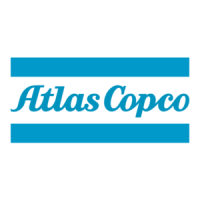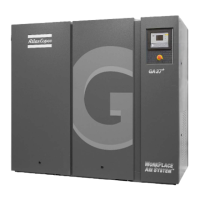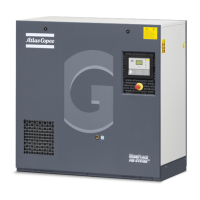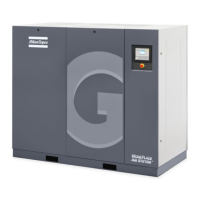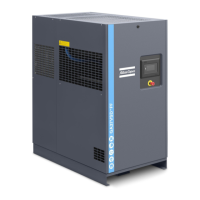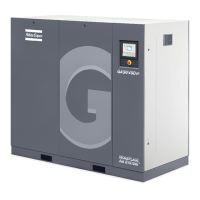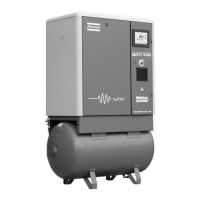Reference Name
AO Air outlet
1 Air/air heat exchanger
2 Air/refrigerant heat exchanger/evaporator
3 Condensate separator
4 Automatic drain / condensate outlet
5 Refrigerant compressor
6 Refrigerant condenser
7 Liquid refrigerant dryer/filter
8 Capillary
9 Bypass valve
10 Condenser cooling fan
11 Pressure switch, fan control
12 Liquid separator
Compressed air circuit
Compressed air enters heat exchanger (1) and is cooled by the outgoing, cold, dried air. Water in the
incoming air starts to condense. The air then flows through heat exchanger/evaporator (2), where the
refrigerant evaporates, causing the air to be cooled further to close to the evaporating temperature of the
refrigerant. More water in the air condenses. The cold air then flows through separator (3) where all the
condensate is separated from the air. The condensate is automatically drained through condensate drain (4).
The cold, dried air flows through heat exchanger (1) where it is warmed up by the incoming air.
Refrigerant circuit
Compressor (5) delivers hot, high-pressure refrigerant gas which flows through condenser (6) where most
of the refrigerant condenses.
The liquid refrigerant flows through liquid refrigerant dryer/filter (7) to capillary tube (8). The refrigerant
leaves the capillary tube at about evaporating pressure.
The refrigerant enters evaporator (2) where it withdraws heat from the compressed air by further
evaporation at about constant pressure. The heated refrigerant leaves the evaporator and is sucked in by the
compressor (5) through a liquid separator (12).
Bypass valve (9) regulates the refrigerant flow. Fan (10) is switched on or off by switch (11) depending on
the pressure degree of the condensate.
Instruction book
26 2920 7180 30
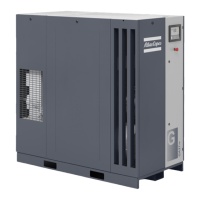
